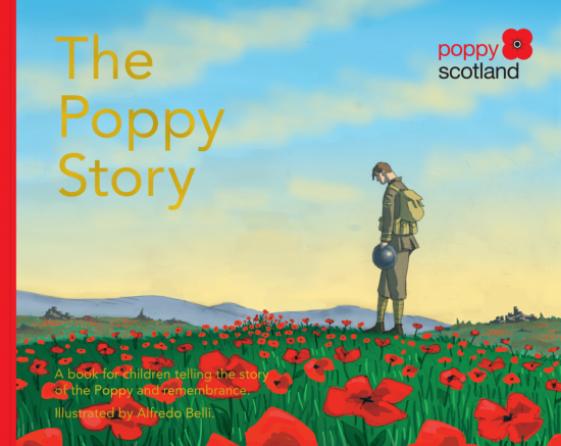
Every primary school throughout Scotland has received a new book which will allow pupils to read all about the development of the Poppy as a symbol of remembrance and how it is used to raise money and help those who need it…
Devised by leading Armed Forces charity Poppyscotland, the book – entitled ‘The Poppy Story’– follows the idea of the Poppy from the poem In Flanders Fields during the First World War and has been published to coincide with the centenary of the signing of the Armistice which led to the end of the conflict.
Poppyscotland’s Learning and Outreach Manager, Isla Campbell Lupton, who also wrote the book, said: “This colourful and informative book has been distributed to every primary school and library in Scotland free of charge, and is aimed at children aged four to eight years old.
“The commemorative book, which is one of Poppyscotland’s learning legacy projects to mark the end of the First World War centenary, tells the history of the Poppy, with particular reference to Scotland. It follows the creation of the idea of the Poppy as a symbol of remembrance.
“From the First World War poem In Flanders Fields, our young readers will learn about the origins of remembrance through to how the Poppy is used to raise money to help those who need it today. We wanted to ensure that all children and young people leave school with an understanding of remembrance and the Poppy, and this book will help us achieve that goal.”
The development and publication of this book, which is also available online and in Gaelic, has been funded by the KMF Maxwell Stuart Charitable Trust and Historic Environment Support Fund as a legacy for the centenary of the end of the First World War.
Historic Environment Scotland Head of Grants Thomas Knowles said: “We are delighted to provide a grant of £6,745 under our Historic Environment Support Fund towards the production of The Poppy Story book. This is a significant project undertaken in the 100th anniversary year of the end of WW1, offering a new resource to help educate young students across the country about the effects of war.”
The book has been illustrated by Alfredo Belli and 3,000 copies have been produced. Alfredo was born in Naples and now lives and works in Rome. After studying at the European Institute of Design, he began to work as an illustrator. He worked with various advertising agencies, graphic and web design studios, while, at the same time, he also began to work for magazines and book publishing companies.

